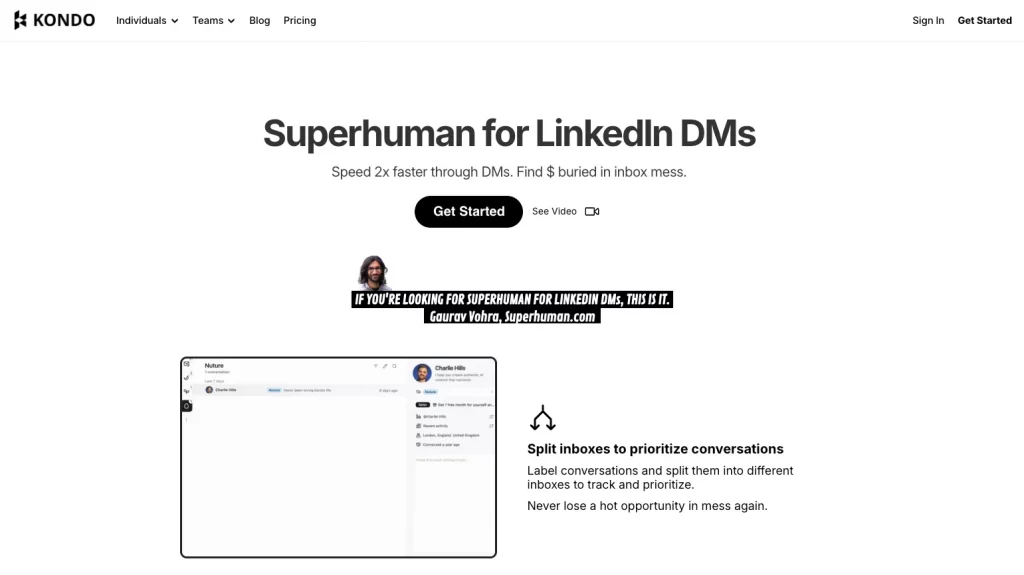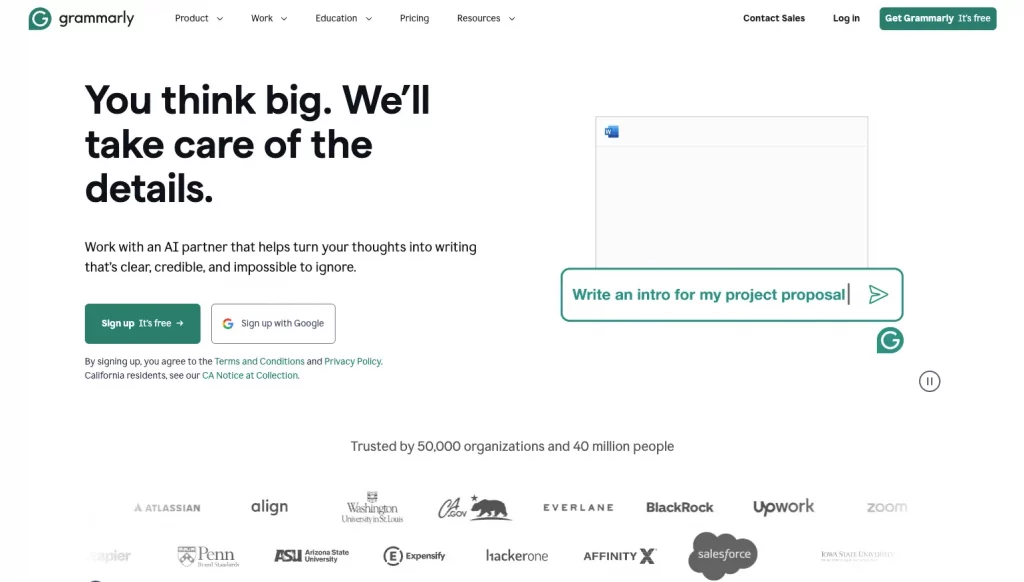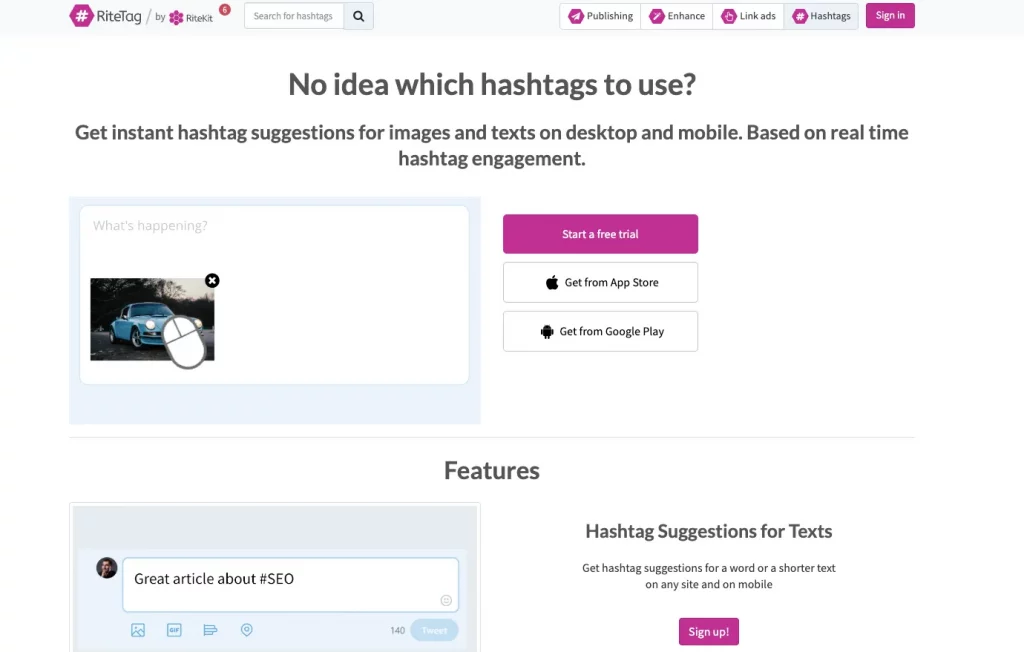Summary
- Reclaim Your Time: Social media managers can save hours each week by using Chrome extensions to streamline content creation, productivity, and analytics directly in their browser.
- Unlock LinkedIn’s Potential: With LinkedIn DMs achieving up to 50% reply rates—vastly outperforming email—managing this channel effectively is critical for capturing opportunities.
- Essential Toolkit: This guide covers 10 must-have extensions, including Grammarly for polished copy, Bitly for link tracking, and platform-specific tools for LinkedIn.
- Conquer Your Inbox: Never miss a lead again by using a tool like Kondo to organize your chaotic LinkedIn DMs with labels, reminders, and high-speed shortcuts.

If you’re juggling content creation, scheduling, analytics, and engagement across multiple social platforms, you know how overwhelming it can be. The constant switching between tools, the desperate hunt for workflow efficiencies, and the never-ending pressure to stay on top of your content calendar can make even the most organized social media manager feel like they’re drowning.
Thankfully, there’s a solution that doesn’t involve adding another complex platform to your tech stack: Chrome extensions. These lightweight, powerful tools integrate directly into your browser, streamlining your workflow and helping you reclaim hours in your week.
In this guide, we’ll explore the top 10 Chrome extensions that will revolutionize how you handle social media, starting with a game-changer for LinkedIn and covering essential tools for content creation, productivity, and analytics.
The Game-Changer for LinkedIn Productivity
1. Kondo: The “Superhuman for LinkedIn”

What it does: Transforms the chaotic LinkedIn messaging inbox into a streamlined, high-speed productivity hub.
Why it’s essential: LinkedIn is critical for business, but its native inbox is a major bottleneck. With LinkedIn DMs outperforming cold email by a huge margin—up to 50% reply rates vs. 0.5% for email—failing to manage them means leaving money on the table. Kondo is the definitive solution for the “message overload, follow-up failures, and mental fatigue” that comes from an unorganized LinkedIn inbox.
Key Features:
- Labels & Split Inboxes: Organize DMs with custom labels like ‘Hot Lead’ or ‘Candidate’ and view them in separate, prioritized inboxes to stop critical messages from getting lost.
- Reminders (Snooze): Hit ‘H’ to snooze a conversation. It will reappear at the top of your inbox when a follow-up is due, creating a foolproof system for your follow-up cadence.
- Keyboard Shortcuts: Fly through your inbox without touching your mouse. Archive (
E), apply labels (L), set reminders (H), and more. Process messages up to 3x faster. - Snippets: Save and reuse common messages with variables like
{firstName}. Trigger them with a ‘;’ command to eliminate repetitive typing and ensure message consistency. - CRM & System Sync: (Business Tier) Automatically push conversation data to HubSpot, Salesforce (via Zapier), Google Sheets, or Notion to keep your systems updated without manual data entry.
- Voice Notes: Record and send voice notes directly from your desktop, a feature LinkedIn’s website lacks, to add a personal touch to your outreach.
Kondo facilitates an Inbox Zero methodology for LinkedIn, turning your overwhelming inbox into a manageable to-do list where nothing gets lost.
Visit trykondo.com to learn more
Content Creation & Curation
2. Grammarly

What it does: An AI-powered writing assistant that checks for spelling, grammar, punctuation, clarity, and tone.
Why it’s essential: Every post, comment, and message you publish represents your brand. Grammarly ensures your content is professional and error-free, building brand awareness and credibility. It’s a foundational tool for crafting high-quality copy that resonates with your audience.
Key Features:
- Real-time grammar and spelling corrections across all platforms (Twitter, Facebook, LinkedIn, etc.)
- Tone detector to ensure your messaging aligns with your brand voice
- Concise writing suggestions to improve clarity
3. RiteTag

What it does: Provides instant, real-time hashtag suggestions for text and images based on engagement data.
Why it’s essential: Maximizes the reach and visibility of your content. Instead of guessing which hashtags work, RiteTag gives you data-driven recommendations to connect with a larger, more relevant audience.
Key Features:
- Color-coded suggestions to indicate hashtag strength (trending, long-lifespan, etc.)
- Generates hashtag ideas from both text and images
- Integrates directly into many social media platforms
4. Pablo by Buffer
What it does: A minimalist image editor designed to create beautiful social media graphics in seconds.
Why it’s essential: Social media is visual, and Pablo allows you to create engaging quote graphics, promotional images, or announcements without needing complex design software. It addresses the common struggle with “quick designs” that many social media managers face.
Key Features:
- Access to over 600,000 high-quality background images
- Simple interface for adding text, logos, and filters
- Templates pre-sized for Pinterest, Instagram, Facebook, and Twitter
Productivity & Workflow
5. LastPass
What it does: A secure password manager that saves and auto-fills login credentials for all your social media accounts and tools.
Why it’s essential: Social media managers handle dozens of logins across platforms, scheduling tools, analytics dashboards, and client accounts. LastPass eliminates the time wasted searching for passwords and the security risk of using simple, repeated ones. It solves the pain of managing credentials for multiple clients or platforms seamlessly.
Key Features:
- One-click login to saved sites
- Securely stores login details, credit card information, and contacts
- Generates strong, unique passwords
6. News Feed Eradicator
What it does: Replaces your distracting social media feeds (LinkedIn, Facebook, Twitter, etc.) with an inspirational quote, helping you stay focused.
Why it’s essential: Social media is full of rabbit holes. This tool is for the manager who needs to post, engage with notifications, or manage DMs without getting sucked into the endless scroll. It lets you use social platforms as a tool, not a distraction.
Key Features:
- Works on major social platforms including LinkedIn
- Simple, one-click toggle to turn feeds on or off
- Customizable replacement content (e.g., inspiring quotes)
Analytics & Link Management
7. Bitly
What it does: A powerful URL shortener that also provides robust click-tracking and analytics.
Why it’s essential: As one social media manager on Reddit noted, “the depth of info you get on users through the analytics… make it a no-brainer for any social media team.” Bitly provides crucial performance tracking data on who is clicking your links and where they’re coming from, addressing the need for effective tracking tools.
Key Features:
- Customizable, branded short links
- Detailed analytics on link clicks, geographic location of clickers, and referrers
- Create a link-in-bio page for Instagram and TikTok
8. SimilarWeb
What it does: Provides in-depth traffic and engagement statistics for any website, directly in your browser.
Why it’s essential: Perfect for competitive analysis and social listening. Instantly see a competitor’s website traffic sources (including which social platforms drive the most visits), key audience demographics, and engagement rates. This data is invaluable for refining your own strategy.
Key Features:
- Website traffic rank (global, country, and category)
- Data on engagement metrics like bounce rate, pages per visit, and monthly visits
- Breakdown of traffic sources (Direct, Search, Social, etc.)
More LinkedIn Power-Ups
9. Breakcold
What it does: A social selling extension that aggregates your prospects’ LinkedIn posts into a single feed for faster engagement.
Why it’s essential: For managers focused on B2B, relationship-building is key. Breakcold streamlines the process of engaging with prospects’ content before you reach out, warming them up and making your outreach more effective. It complements a DM-focused strategy perfectly.
Key Features:
- Create curated feeds of prospects, clients, or influencers
- Engage with posts (like, comment) and send DMs from one central place
- Helps build B2B relationships more efficiently
10. AuthoredUp
What it does: A LinkedIn post editor and previewer that helps you format posts perfectly before publishing.
Why it’s essential: LinkedIn’s algorithm favors well-formatted posts. AuthoredUp lets you see exactly how your post will look on mobile and desktop, including how text gets truncated by the “see more” button. This ensures your hook is always visible, maximizing user engagement.
Key Features:
- Live preview for desktop and mobile feeds
- Text formatting tools (bold, italics)
- Save post drafts and create templates
Conclusion
Being an effective social media manager isn’t about having the most tools—it’s about having the right tools. The Chrome extensions on this list are designed to solve specific, time-consuming problems—from crafting perfect copy with Grammarly to mastering your LinkedIn inbox with Kondo.
By integrating these lightweight extensions into your browser, you can create a more streamlined, productive, and powerful social media workflow. You’ll spend less time fighting your tools and more time creating value and building relationships.
What are your must-have Chrome extensions for social media management? Did we miss any of your favorites? Share your top picks in the comments below!










